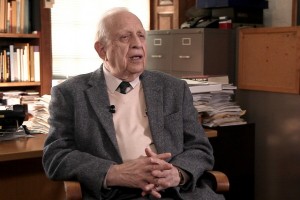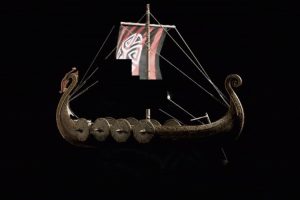Neanderthals
Archeologist Tim Reynolds on Mousterian tools, cross-species interactions, and Neanderthal language
What was the scale of trading between Central and North Americas several thousand years ago? How archaeological and anthropological studies will deal with sites, that will be discovered in future? MIT Professor of the History and Theory of Architecture Mark Jarzombek speaks on putting native architecture into context.
If you go to South America you have, of course, fantastic urban civilizations with the Mayans and the Incas with their amazing stonework that still today defies imagination how actually they were built. We don’t know how the Incas made their store work, they’re so exquisite, so beautiful that today people are thinking that these are made by, you know, space aliens. Which is insane and an insult to the genius of this civilization. But it just goes to show that we have a whole range of innovations, that were made by the Native Americans, that continuously excite us and need a lot more research even to understand how these things came about, as well as their historical resonance through time.
Imagine a football field size circle, so a 100 meters circle, which they first cover in white sand. One inch or two inches of white sand that they brought from the coast, where you can have this pure white sand. And then on top of that they build a mound with different colors — red soil, orange-red, orange soil, black soil, white soil. Different colors, we don’t know what they meant, but they probably were meant for different tribes, different colors associated with them, like a football team almost. And they would come and bring the soil from their regions to build this mound over the period, we don’t know even if it took years, or two years, or five years, or ten years to build — we don’t have no idea. But it’s a tremendous accomplishment.
If you want to study the Native American World archaeologically we know maybe ten percent, five percent of the sites, that we could look at and if we don’t have enough of the pieces, it’s hard to find the glue and find the answers to many of the questions we want. But for that reason we shouldn’t sort of not talk about it. We still have to make conjectures about how those things operated. We do know a lot and anthropology in the last, I’d say, ten or fifteen years has made huge strides in understanding and reconceptualizing how spaces were used, how shamanism interacted throughout the different places and a different power relations and different notions of center and periphery and different ecologies that were at play at the time.

Archeologist Tim Reynolds on Mousterian tools, cross-species interactions, and Neanderthal language

Nobel Prize laureate Roy Glauber on avoiding predetonation, the Trinity test, and the hydrogen bomb

Professor of German Studies Rudolf Simek on the Vikings' nomadic life, their cultural achievements, and the en...